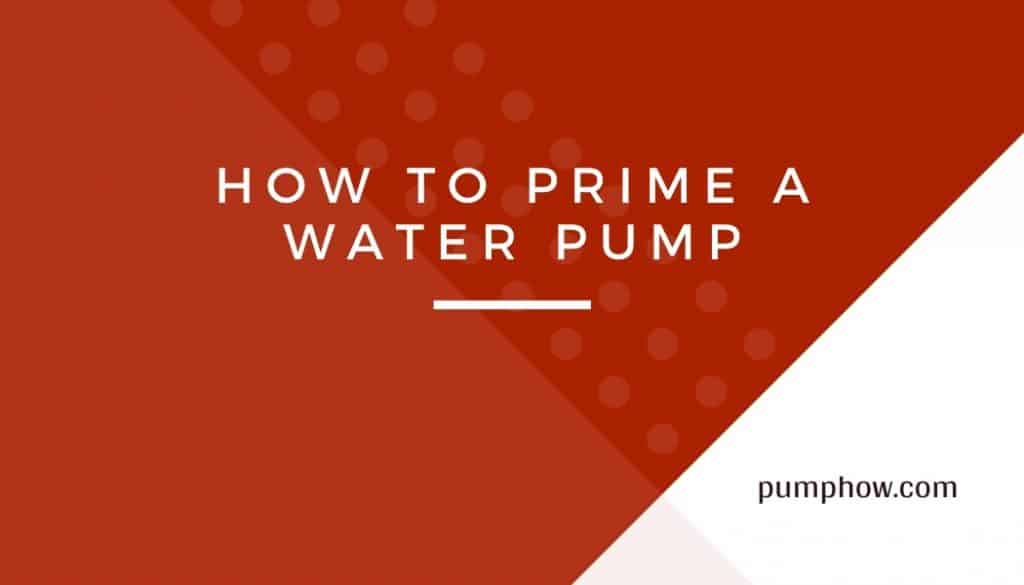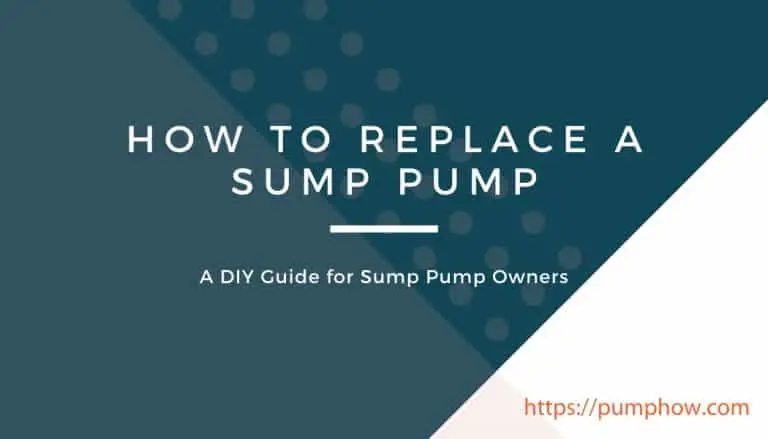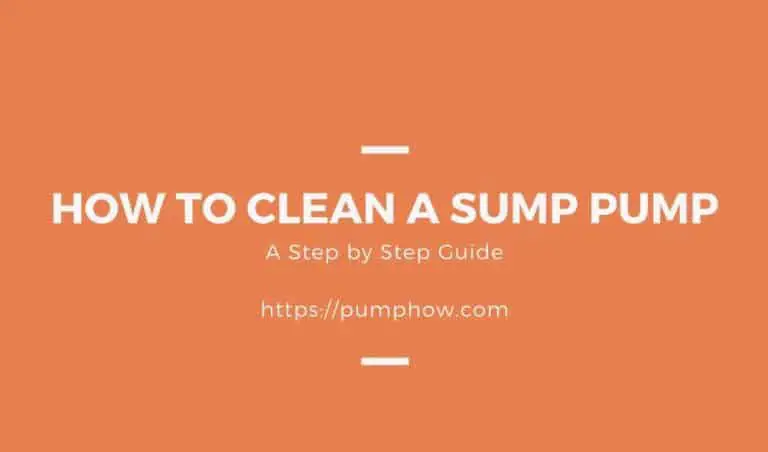A water pump needs priming so that it gets back the pressure it requires to pull water on its own. Many homeowners think only a plumbing expert can be entrusted with the job of repairing or troubleshooting a device that provides water to a home’s plumbing system. But priming a water pump is actually easy and requires no specialized training.
All you need is just a set of clear instructions. What if you never had a good look inside the system? Will only a foolproof guide be enough for an absolute beginner? Well, this article covers everything that one could want to know about priming a pump. Be it a sump pump, well pump, pool pump or any other type of water pump. Just go through until the end, and you’ll be better off doing it yourself in less than half an hour.
First, we’ll present our complete guide to help you understand the procedure. Then, we’ll provide you some insights into what happens when a pump is “NOT primed”, how you can detect the issue and be certain that priming is the only way out, and how to do the same to a pool pump.
How to Prime a Water Pump in Under 30 Minutes?
There’re three stages involved in it, such as preparing the pump, filling and flushing it, and checking if everything works.

5 Steps to Finish Your Preparation
These actions will allow you to get the job done without any substantial cost unless you’re forced to pay for any replacement.
-
Disconnect Power
You know you can’t lose any point of caution while tinkering with anything that uses electricity. So, disconnect the pump from its power source by turning off the electrical power and then the system at your breaker panel. Unless you’re very sure of the status, check the pump’s base to check if it’s off.
-
Access the Pump System
It’s important to locate exactly the particular plumbing fixture that lets access the pump’s system. Sometimes, finding the right fixture isn’t easy. Try whatever lies in the closest proximity to the tank.
Some houses use pumps that are too simple to have an intake valve. It’s not wrong to have one such system because you can always make yourself one. Gather some clamps, pipes, and a tee fitting to make a valve on your own. Then, install it near your water source.
-
Take Care of Plumbing Issues
Since you’re working on the pump, it’s an opportunity to do some maintenance, and inspecting the pump system for any damage is recommended.
Start by check everything of the piping and fittings to find any damage or crack, which are likely to surface when a pump isn’t in use for some time. Examine the drain plugs and tighten them if required. Then, try to operate the valves manually.
Each anchoring fastener, belts, bolt, nut, pulleys, and safety guards must be tightened securely in place. Check all of them and do whatever seems fit. Some replacements might also come handy.
-
Gather a Hose and Find an External Source of Water to Connect to
Part of your preparation includes getting a hose and a water source that remains independent of the one you’re about to work on and can provide water using that hose.
An unused or old hose needs to be flushed so that it becomes free of wastes or any kind of build-up that might contaminate the water. Maintain a constant stream of water through the hose for 10-15 seconds. If the hose has just been bought, you may not do it.
You may want to use a garden hose or the one used by your washing machine and connected to your garden hose. Check to see if it contains lead or something that makes it vulnerable to contamination. Use a filtering method in that case.
-
Relieve the Pressure
Locate the relief valves (if any) on your pump system to ensure that nothing is in action to prevent water pressure from increasing or building up. Open those valves and check the pressure gauge for proper function.
For the existing air/pressure to be out of the system, the valves need to be opened. Use a combination wrench to unscrew it off.
Some operators believe that the valves needn’t remain open for any longer than a minute. But you should allow some more time to let the existing pressure escape completely. Allowing the pressure to build up to a dangerously high level will result in a permanently damaged pump.
2 Steps to Do the Actual Priming
You’ll be doing the “priming” thing at this stage. The volume of water that you’ll pour into the pump’s priming hole will travel to the well pipe quickly and its impeller chamber.
-
Insert the (Garden) Hose and Pour Water
As you’ve identified the plumbing fixture that lets you access the water pump, you can now connect the hose to that fixture. Doing this means a new source is ready to provide water into your establishment. Just the moment you turn the water on, air should start flowing through the pump system. You may hear something, but don’t worry.
Listen carefully to figure out if water keeps on filling the pump’s tank. You can also look at the pressure gauge that lets you know if the water level is on the rise.
-
Stop Pouring
At some point (usually within a few minutes), you may see that water starts and keeps coming out your pump’s opposite end. It means you shouldn’t allow any more water to come through the hose.
Seeing that water isn’t flowing any longer on the opposite end, you can take that a positive result. The opposite end is where you’re supposed to take the water to. It indicates that you’ve managed to get the water system pressurized.
3 Steps to Put Everything Back to Place
Technically, you’ve completed your education on priming a water pump. All that’s left is a few things to see if you’ve got it right.
-
Restore Power and Turn the System on
Remember how you disconnected? Now is the time to put the connections back to their respective places. Leave the system running for a couple minutes.
Don’t worry if it fails to run. Maybe, the pressure in the water tank is either above or at the cut-out pressure. Check again to see if you’ve left the relieve valves open. Wait for a moment to see if water begins to seep from those valves.
If it does, you must reinstall the relief valve. Before that, try to wrap it around using PTFE thread-sealing tape. You can count on 2 turns of wraps to ensure optimum suction. You’ll find them at any local plumbing store at a very low price.
-
Allow the System to Finish the Cycle
As you’re done switching the power on and restoring the electricity, the pump is likely to start running immediately. Look at the water pressure. If the pressure jumps from zero (0) and gradually registers a consistent climb, you’ve managed to do the priming appropriately.
-
Prime Once Again
Do you hear any loud sound coming from the pump as it gets muffled quickly with the water pressure filling the system? Look at the two indicators! If they last for just a moment and the water pressure gets lost again or they don’t occur at all, something isn’t working and the pump needs to be primed once again.
Some pump systems use bladderless steel water tanks. If yours does have one such tank, you should leave its drain open during the beginning of the process. Water can push any air out of the tank’s drain and enter. Close the drain immediately after the water comes out of it.
Another Priming Method
According to many experts, this particular method isn’t as effective as the one discussed above. But you can still try it because you may want to finish quickly, and it’s just the best way for that.
- You need to use a well-built suction supply above your pump.
- Open the isolation valve on the suction supply carefully and slowly.
- There’re air vents on that suction supply and discharge piping. Open them too.
- Leave them that way for as long as it takes the fluid to flow out fully.
- Close those air vents first. Then, discharge the suction’s isolation valve.
- Check the valve 2-3 times and suction it.
All of the above procedures seem too simple to worry about, don’t they? It’s one of the reasons why a lot of homeowners think they can leave it without care for a while. Well, you won’t like the consequences.
What Happens If a Pump Is Not Primed?
Priming a pump is NOT optional. It’s critical to the pump’s regular functions. A pump that’s not primed cannot create sufficient suction pressure to lift the water. When the pump struggles too much but cannot lift water, it undergoes issues like failure to start, overheating, etc.
The primary goal of a priming method is to fill a pump with water before it is switched on so that the excess gas or air or anything that may displace the water can be removed.
The entire procedure isn’t much of a trouble for many, but it becomes a problem when you have to do it more often that you want. Let’s know what causes this.
3 Reasons a Pump Loses Prime and Quick Solutions
Apart from the motor being faulty, there’re three solid reasons for the pump to lose its prime, such as leaks, valves, and clogging/obstructions.
-
Leaks
Don’t ignore the intake or suction side of your pump because a leak on that part of the pump is the source of most of the problems that a water pump may have. Sometimes, leaks may occur around the pump’s shaft seal.
Check the connections of the pipe are threaded into the pump’s housing securely. Make sure the intake or suction line doesn’t have cracks or loose fittings due to improper gluing.
-
Faulty Valves
Modern water pumps come with foot valves which do the job of keeping water in the intake/suction line when the water pump isn’t in use. Leaks or damages to these valves may cause the pump to lose prime between the events of starts.
Fixing the valve may seem a good solution, but replacing it is even better. The cost of a foot valve can be anywhere between $50 and $100.
-
Obstructions
Obstructions in a water pump’s line aren’t good. The most affected components are the foot valves or suction strainers. If the blockage isn’t dealt with, the water that stays in the suction line may overheat and boil out of the pump’s casing.
After accessing the system, you can remove the blockages easily, and success in it comes at no cost except your knowledge and labor.
Unless you take care of these issues, your water pump won’t be able to keep up its prime for long; no matter if you’ve just had it primed.
What If You Need to Prime Your Pool Pump Too?
If you need to work on your pool pump, there’re differences you should consider while following the procedure. This time, pool skimmers have to be primed at first. After that, you can work on the main drain.
Locate the diverter valve and then turn it to the drain indicator. However, you need to shut off the water supply to those sections first. The next action is to turn that valve away from the drain indicator. The goal is to open it along with your pool skimmers. Now, you should wait until the water starts flowing normally.
Finally, there’s ONE preventive measure to take if you intend to become conscious of the priming as well as other maintenance requirements and overall safekeeping of your water pump.
Over 90% of people who own a water pump don’t keep an eye on pressure gauges. But plumbing experts suggest that the gauges be checked periodically or once a week during colder months. By forming this simple habit, you can know when the pressure falls below the required level or if the pump has a trouble functioning.
Got a specific question? Write to us anytime if you have more to know about priming and more water pump troubleshooting techniques.






